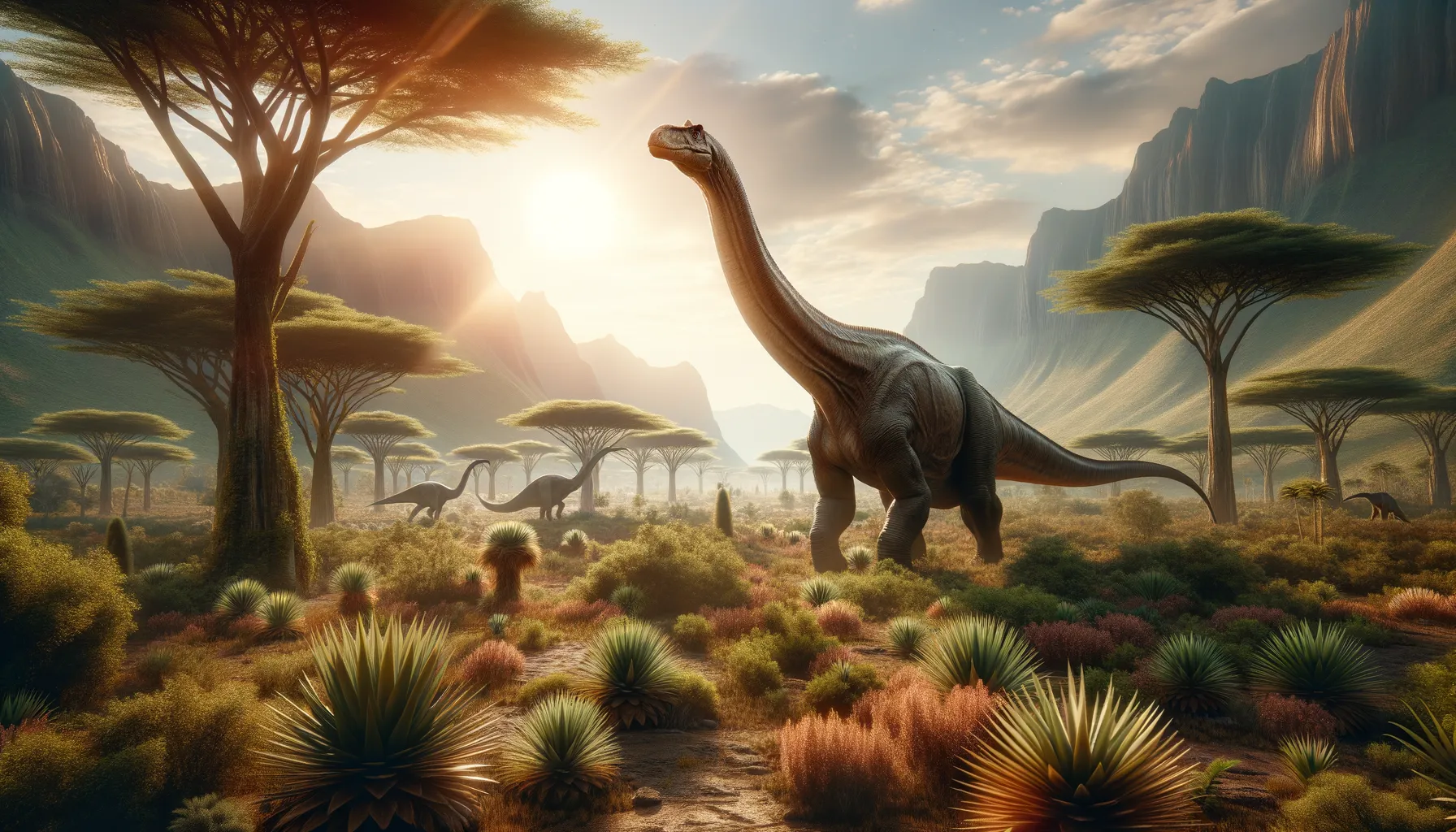
Plateosauravus
An early giant of ancient landscapes!
Period
Triassic
Length
About 8 to 10 meters long.
Height
Roughly 3 meters tall.
Weight
Approximately 1,000 to 2,000 kg.
Plateosauravus was a large herbivorous dinosaur from the Triassic period. It is one of the earlier examples of long-necked dinosaurs, mostly quadrupedal in nature but possibly capable of rearing on its hind legs. Found mainly in southern Africa, this dinosaur played a key role in understanding the early diversification of plant-eating dinosaurs, offering insights into the adaptations necessary for such a diet in a quickly changing world.
Diet
Plateosauravus was primarily herbivorous, feeding on a variety of prehistoric plants. Its teeth and jaw structure suggest it was well-adapted to rip leaves from trees and bushes.
Hunting
Being a herbivore, Plateosauravus did not hunt for food. Instead, it foraged among prehistoric flora, using its height advantage to reach vegetation that other creatures could not.
Environmental challenges
During its time, Plateosauravus faced the challenge of rapidly changing climates. The transition from moist to more arid conditions would have prompted it to adapt to varying food availability. Additionally, pressure from predatory species would have been a constant threat, requiring vigilance and possibly group defense strategies.
Speed
Relatively slow, likely 5-10 mph.
Lifespan
Possible lifespan of 20-30 years.
First discovery
First discovered in South Africa in the early 20th century.
Fun Facts
- Plateosauravus was one of the earliest large herbivorous dinosaurs, living around 210 million years ago.
- Despite its size, Plateosauravus was a lightweight for its time, using its long neck to reach vegetation.
- It belonged to a group known as prosauropods, which were early relatives of the giant sauropods like Brachiosaurus and Diplodocus.
- Fossils of Plateosauravus have been found in what is now South Africa, offering a peek into the diverse dinosaur communities of the Triassic period.
- Plateosauravus could walk on both two legs and four, showcasing a flexible movement style to adapt to its needs.
- Its name means 'broad lizard grandparent', hinting at its role as one of the foundational species of larger dinosaurs that came after.
- Plateosauravus had a small head compared to its body, which suggests it relied more on its long neck to forage than intricate chewing.
Growth and Development
Plateosauravus likely experienced rapid growth during its early years, much like modern reptiles. As they matured, their skeletal structure would have supported the heavy body, particularly in the robust limbs. Evidence suggests that they may have had growth spurts tied to environmental conditions and food availability.
Habitat
Plateosauravus lived in river valleys and floodplains where vegetation was abundant. These areas provided ample food sources and potential shelter from larger predators. As landscape-dominated by conifers, it could graze among low-lying plants and higher greenery within its reach.
Interaction with other species
As a large herbivore, Plateosauravus likely had minimal direct interaction with prey species but remained wary of predators. Co-existence with smaller herbivores might have been marked by competition for resources. Its size may have detered smaller predators; however, it would still need to fend off larger carnivorous dinosaurs.
Natural lifespan
Its natural lifespan could extend up to thirty years under favorable conditions.
Reproduction
It likely reproduced by laying eggs, with nesting sites possibly communal for increased protection. Parental care was likely minimal, typical of many early dinosaurs, with hatchlings growing independently post-hatching.
Social behaviour
It might have exhibited some degree of social behavior, including herding, to offer protection against predators. Group dynamics would have facilitated better foraging and landscape navigation.
Fossil locations
Fossils of Plateosauravus are primarily found in South Africa, representing some of the earliest dinosaur sites in the region. These findings have provided significant insight into early dinosaur evolution. The consistency of finds in these areas suggests a stable population existed during the Triassic.
